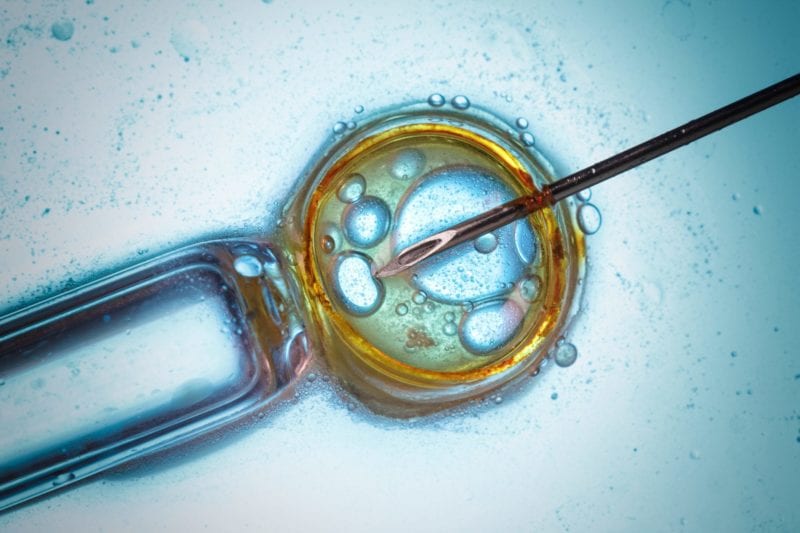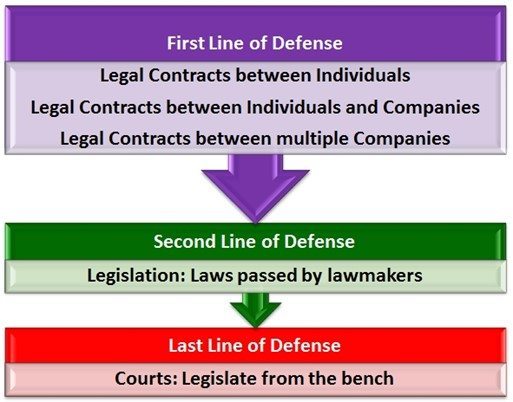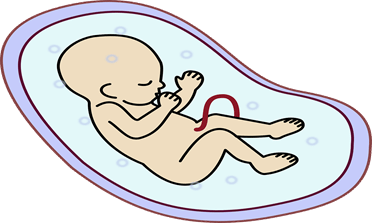
These advances have helped millions of couples have babies. IVF (in vitro fertilization) is the most common method of assisted reproduction. Today, 1.5% of all babies born are the result of assisted reproduction.
Some early successes resulted in births that were sensationalized because of the number of babies. Terms we had never heard were splashed across headlines when women gave birth to large numbers of babies all at once:
- Octuplets: eight babies born to one mother at the same time.
- Septuplets: seven babies born to one mother at the same time
- Sextuplets: six babies born to one mother at the same time
- Quintuplets or “quints”: five babies born to one mother at the same time
- Quadruplets or “quads”: four babies born to one mother at the same time
Who has custody of Embryos?
As the state-of-the-art in assisted reproduction improved, the number of risky multiple births declined. Excess embryos, that possess the potential to become babies, are now stored for later use. The media’s spotlight has turned away from multiple births to custody battles over embryos and gametes (ripe egg and sperm cells).
With an increasing number of ways to create babies from our genetic material and an absence of risk management planning, it is becoming more common for custody battles over embryos to stir controversy and news stories.
Lawmakers are Motivated Not to Enact Laws
State and Federal lawmakers are not acting quickly to provide legal guidelines for deciding custody disputes over embryos and gametes. They have their reasons. Any legislation affecting the status of embryos has the potential to land deep in the muddy waters of the abortion debate.
Court decisions Embryo Custody
When there is an absence of law, the courts have to decide cases brought before them the best they can. Case law based on their decisions then become a precedent that guides future decisions.
Years ago, Justice Scalia spoke at a conference. During his talk, he said the Supreme Court ends up making laws because the lawmakers were too worried about votes to do their job. He essentially called Federal legislators cowards for not addressing it proactively.
An article in the National Review following Justice Scalia’s death reinforced his stance on this issue:
“Liberty exists by design and, as Andrew Jackson put it, by eternal vigilance. America’s Founders were clear that liberty requires limits on government, including a particular role for unelected judges. Judges that say what the law is promoting liberty; judges that say what they think the law should be undermine it. Justice Scalia was precisely the sort of judge that liberty requires.”
Looking through the various court decisions that have been made relative to custody of embryos and gametes, some of them seem blatantly unfair. Some of the decisions seem to violate basic Human Rights. The problem is that in the absence of laws that clarify how custody is to be handled, judges must do what the law indicates, even when it seems unfair and even when it seems to be against public policy, proving the truth of Scalia’s words:
‘If you’re going to be a good and faithful judge, you have to resign yourself to the fact that you’re not always going to like the conclusions you reach.’ — Antonin Scalia
This chart outlines some of the important case law relating to the disposition of embryos at the time of divorce or separation.
| State | Mother Stance | Father Stance | Contract? Yes? No? |
Date | Disposition |
| TN | She wanted to use the embryos herself or donate them to another couple. | He argued that he had a right not to reproduce. | No | 1992 | Davis v. Davis The Tennessee Supreme Court favored the ex-husband’s right not to procreate because the mother could adopt. |
| NY | She wanted to use the embryos. | He did not want his ex-wife to be able to use the embryos. | Y | 1998 | Kass v. Kass The New York Court of Appeals enforced a contract where the disposition was to donate the embryos to research in the event of a divorce. |
| MA | She wanted to use the embryos. | He asserted that the wife changed the consent documents to show she would receive the embryos if they divorced. | Y | 2000 | A.Z. v. B.Z. The Massachusetts Supreme Judicial Court favored the ex-husband’s right not to procreate, “contemporaneous mutual consent, even valid agreements, are unenforceable if they impose unwanted parenthood.” The court considered the fact that the couple had other children. |
| NJ | She argued that she did not want to procreate with the embryos. | The husband wanted to use a surrogate with the embryos. | N | 2001 | J.B. v. M.B. The agreement left the decision of what to do with the embryos up to the court in the event of a divorce. The New Jersey Supreme Court favored the ex-wife’s right not to procreate. (contemporaneous mutual consent) |
| WA | Mother wanted the embryos given to another couple for their use. | Father wanted the embryos used by a surrogate. | Y | 2002 | Litowitz v. Litowitz The Washington Supreme Court followed a contractual approach and ordered that the embryos should be destroyed. When the contract was signed the parties selected “(3) That our pre-embryos be thawed but not allowed to undergo further development” at the end of five years of being frozen. |
| IA | She wanted custody and the right to implant them in herself or a surrogate. She was willing to allow her ex-husband to either exercise parental rights or terminate them. | He did not want the embryos destroyed but he did not want his ex-wife to use them. He was willing to donate them for use by another couple. | 2003 | In re Marriage of Witten
The Iowa Supreme Court ordered that the embryos will remain frozen until there is a mutual agreement (contemporaneous mutual consent) “We think, however, that it would be against the public policy of this state to enforce a prior agreement between the parties in this highly personal area of reproductive choice when one of the parties has changed his or her mind concerning the disposition or use of the embryos.” |
|
| TX | She wanted to implant the embryos. | He wanted the embryos destroyed. | Y | 2006 | Roman v. Roman The Texas Court of Appeals followed a contractual approach which favored the ex-husband’s right not to procreate. The contract called for destruction of the embryos in the case of divorce. |
| OR | The wife wanted the embryos destroyed. | Husband believed the embryos are alive and he wanted to donate them in a way that would allow “his offspring to develop their full potential as human beings” which he claimed should override his wife’s desire not to procreate. | Y | 2008 | In re Marriage of Dahl & Angle The Oregon Court of Appeals favored the ex-wife’s right to destroy the embryos. The contract specified the ex-wife had an exclusive right to choose between research use and destruction. |
| PA | Wife wanted to implant the embryos in herself to have a child or children. | Husband did not want to be compelled to procreate. | N | 2012 | Reber v. Reiss The Pennsylvania Superior Court favored the ex-wife’s right to procreate because she could not reproduce otherwise. |
| IL | After learning she had cancer and that the treatment would leave her infertile, she entered into a verbal agreement with her then boyfriend to freeze embryos. | After they broke up, the boyfriend sued in an attempt to prevent her from using his genetic material to procreate against his will. | Y – oral | 2015 | Szafranski v. Dunston The Illinois Appellate Court use a contractual approach to balancing-of-interests test and determined that the embryos could be used by the ex-girlfriend because she could not procreate with her own eggs otherwise. |
| CA | She wanted to use the embryos. | He wanted the embryos destroyed as indicated in the contract “in the event of a divorce.” | Y | 2016 | Findley v. Lee The California Superior Court used a contractual approach which favored the ex-husband’s right not to reproduce despite the ex-wife’s infertility (inability to reproduce using her genetic material) and ordered destruction of the embryos in the event of divorce, according to the terms of their contract. |
The couples whose lives ended up creating case law on this issue all made one mistake. They failed to recognize that the contract prepared by the fertility clinic is written primarily to minimize the clinic’s risks. Any benefit to the couple is incidental. The purpose of those contracts is not to protect the couple from potential risks. This is understandable. It is the way businesses work. The couple is responsible for protecting themselves. In order to do that, they need to have a contract for their situation or use other risk management strategies, such as donor gametes with their genetic material, so that they retain control of their reproductive capabilities.
Manage Risk Embryo Ownership
This chart shows the best ways to manage risks. The first line of defense is to have a legal contract that spells out your wishes and plans for contingencies. Even when there are laws in place governing the activity, as long as there aren’t laws against the way your contract is written, your contract will override the law in areas covered by the contract. This is the basic premise behind writing a Will instead of using the State’s Will for those who die without one and for writing a prenuptial agreement that overrides the divorce laws of the State.

What can a citizen do when lawmakers do not do their job? Court opinions can vary greatly on how a case will come out but individuals are not subject to the whims of the laws or the variances in the laws between individual states if they plan ahead.
In the absence of a law against it, citizens are able to enter into contractual agreements that spell out their rights, responsibilities, and wishes. A basic tenet of contract law is that it must have a legal purpose. In the absence of laws against treating embryos a specific way, individuals have the ability to decide for themselves how they want their genetic material handled.
The key is to be proactive and act before there is a problem. Once you’re in a dispute or going through a divorce, it becomes much more difficult to achieve the outcome you want and it may be more expensive than you can afford.
- Was the contract for the disposition of the embryos part of an informed consent document or was it a separate document?
- Does the court view the document as legally binding (does it meet the requirements of a legal contract)?
- Does the court view the agreement as enforceable?
Courts are using three basic concepts when they decide embryo custody cases.
Contemporaneous mutual consent
Contemporaneous mutual consent requires consent now. Current wishes have more weight than prior statements or agreements. This is a common clause in fertility clinic contracts because it protects them from being sued by someone who no longer wants their genetic material used.
When you first begin learning about the case law in this area, it can feel confusing when men argue for the right not to procreate. We are all familiar with the fact that men do not have a right to not procreate when they father a child accidentally. It only begins to make sense when a man having intercourse with a woman is viewed as his affirmative consent to any subsequent pregnancy from that action. Because the woman’s body remains involved in the process of bringing the child to life, she has a continued ability to end the pregnancy—not because of a right not to procreate, but because of a right to bodily autonomy.
Court cases with contracts are complicated by clauses that require contemporaneous mutual agreement at the time the embryo is implanted instead of viewing the creation of the embryo as affirmative consent to a subsequent pregnancy from that action. Fertility clinics frequently include these clauses.
Individuals who will not have another option to become a parent with their own genetic material are taking a significant risk signing a contract that requires contemporaneous mutual agreement at a later point in time.
Contract Law – Fertility
Contract law doesn’t care what the parties want now, it enforces what they agreed to when they signed the contract. Litowitz v. Litowitz is an example of this where neither party wanted the embryos destroyed but the court ordered their destruction based on a contract they signed years before.
Balance the interests of the parties
This strategy tends to favor a parent’s right not to procreate over the other’s desire to procreate unless the one who wishes to procreate has no other options using their own genetic material.
- In some cases, this has been extended to looking at whether the person has the ability to adopt. One case that looked at adoption ruled it out as an option because the age of the woman made it unlikely she would be able to do it.
Protecting your fertility
There are two easy ways to manage the risk the other contributor to your embryo will change his or her mind at a later date:
-
Use a Family Law attorney to write an agreement that considers the agreement at the time the embryo is created affirmative consent to any subsequent pregnancy from that action with preference to the party whose future fertility is at risk.
- Alternatively, the embryos could be split with each party gaining custody of some of them.
- Instead of using the genetic material of the current partner to create all the embryos, use the genetic material from an anonymous donor for some of the embryos. If the relationship ends, the embryos created from a donor’s genetic material will not be at risk of a court battle attempting to stop someone with no other way to procreate with their own genetic material from using the embryos. If your current partner objects, leverage that to get the partner to agree to a clause that considers the creation of the embryo affirmative consent to use them.
Note: When a married individual uses donor eggs, it doesn’t alleviate the need to specify who they belong to in the event the relationship ends. A vindictive spouse could fight for possession even if they do not include that spouse’s genetic material.
- Another alternative is to also cryopreserve unfertilized egg or sperm cells from the person whose fertility is at risk.
IN Arthur Lee WITTEN III and Tamera Jean Witten, the court used a contemporaneous mutual agreement clause in the consent agreement for IVF to decide the fate of the embryos:
“When chosen voluntarily, becoming a parent can be an important act of self-definition. Compelled parenthood, by contrast, imposes an unwanted identity on the individual, forcing her to redefine herself, her place in the world, and the legacy she will leave after she dies. For some people, the mandatory destruction of an embryo can have equally profound consequences, particularly for those who believe that embryos are persons. If forced destruction is experienced as the loss of a child, it can lead to life-altering feelings of mourning, guilt, and regret.”

If you want to ensure that you will be able to use your own genetic material to have a child, you have to proactively manage the risks.
The McIlveen Family Law firm is here with expertise that will help you avoid heartbreaking pitfalls related to adoption and other methods of creating a family. We can help you with any of your legal needs including adoption, providing for After Born children in your Will, permission to use your genetic material after your death, or prohibiting the use of your genetic material after your death.

